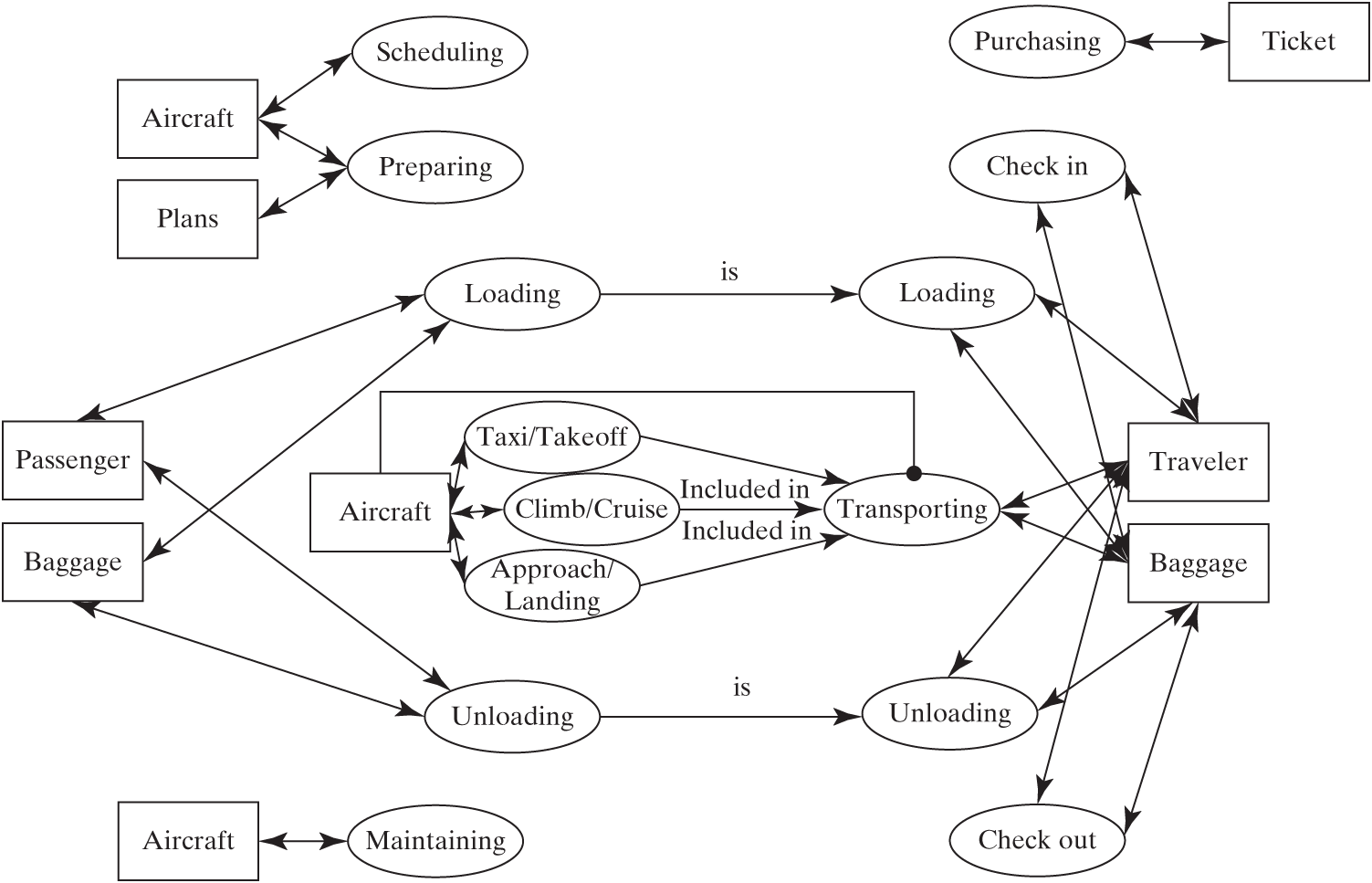7.5 Concepts of Operations and Services
We have defined the concept of the system, but one aspect of conceptual development remains in Question 5b of Table 7.1: concept of operations, or “conops.” Operational behavior of a system was introduced in Chapter 6. There we learned that operation is broader than function. Function is a somewhat quasi-static view of what a system can do. Operation is the sequence of things leading to the delivery of the primary function, and it indicates what the system actually does.
The relationship between concept of operations and a detailed sequence of operations is the same as the relationship between system concept and system architecture. The concept of operations sketches out how the system will operate: who will operate it, when, and coordinated with what else.
As an example, Figure 7.12 represents Integrated Concept 1 from Table 7.8. Both the table entry and the figure make the system look rather static. How does it actually operate? The concept of operations would identify three main operations executed by this network: data are moved from the user device (laptop) to the ISP; data are moved from the ISP to the user device; and the local network is managed, to prevent congestion. A complexity of data networks is that all of these can be going on simultaneously.
The concept of operations for the outgoing data is suggested by the arrows in Figure 7.9. The sequence of operations is that the data are moved from the laptop through the WAP to the switch, then the gateway, the modem, and on the telephone line toward the ISP. Incoming data from the ISP to the laptop follow the same path in reverse. The traffic management performed by the switch and gateway will be discussed in Chapter 8. With this concept of operations in hand, it is much easier to understand how the home data network actually operates and delivers value.
As a second example, the left side of Figure 7.13 sketches out the concept of operations for an air transport aircraft. Weeks ahead of a flight, there is some scheduling of aircraft and crews, followed by flight planning on the day of the flight. Just before the flight, the aircraft is loaded, and then actual flight operations begin. The plane arrives and is unloaded. At some designated interval, the aircraft is maintained. This concept of operations contains much more information than the statement of the function of the aircraft—to transport passengers and baggage. The concept of operations is very focused on the aircraft, and the traveler appears only as “baggage.”

Figure 7.13 Concept of operations of an aircraft (left) and the concept of the service of air transportation (right).
This is an operational view of the aircraft. What does it look like if we view this as a transportation service? If the enterprise transfers the instrument, it is called a good. If it transfers the function, it is a service. In this case, an aircraft manufacturer sells airplanes (a good), and an airline sells transportation services.
The right side of Figure 7.13 illustrates the consumer-centric view of the concept of service. The traveler plans the trip and buys the ticket. After arriving at the airport, the traveler checks in and checks baggage. By different processes, each is loaded on the aircraft. This is a point where the concept of operations of the aircraft and that of the transportation service are identical. The details of taxi, takeoff, and the like are relatively unimportant to the traveler. After unloading, the traveler and baggage are unloaded, and the traveler “checks out” of the airport.
During operations, there is a very important relationship concerning the aircraft. From the perspective of the concept of operations of the aircraft, the aircraft is the operand: It is loaded, it is flown, and so on. From the perspective of the concept of the service, the aircraft is the instrument: It transports the traveler.
In retrospect, we see that a service can be architected the same way as a system; it is more process-focused than a product. A service is a system! In addition, we see that the concept of operations contains information vital to understanding the system architecture.
In summary:
The concept of operations defines at a conceptual level how the system actually operates when it delivers value.
Concepts of operations can be defined for the system, and for the service built upon the system.
